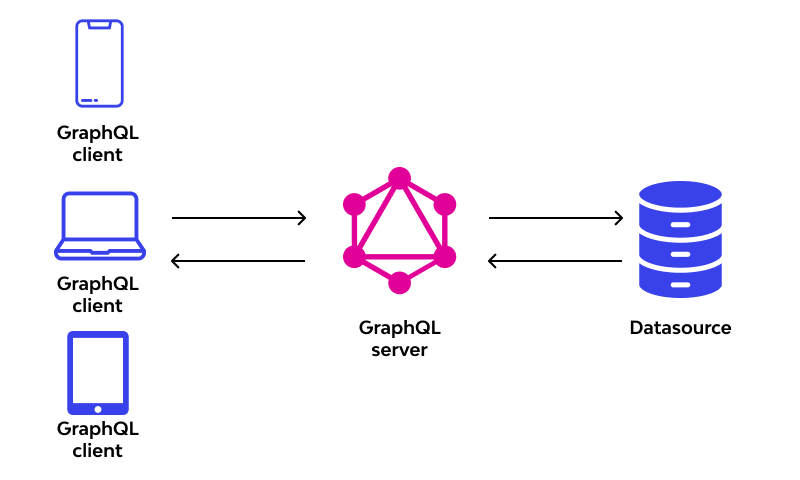GraphQL
What is GraphQL?
Definition:
GraphQL is a query language and runtime for APIs (Application Programming Interfaces) that enables clients to request only the data they need, allowing for more efficient and flexible data retrieval from servers. Originally developed by Facebook in 2012 and subsequently open-sourced in 2015, GraphQL has gained popularity among developers for its ability to streamline data fetching and simplify API development.
Analogy:
Think of GraphQL as a customizable menu at a restaurant where diners can select precisely what they want to eat. Instead of receiving a fixed meal, customers can tailor their orders to include specific dishes, quantities, and preferences. Similarly, GraphQL empowers clients to specify the exact data requirements, eliminating unnecessary data and improving performance.
Further Description:
GraphQL operates on the principle of defining a schema that outlines the data types and relationships available in the API. Clients can then send queries to the server, specifying the fields and relationships they wish to retrieve. Unlike traditional REST APIs, which return fixed data structures determined by the server, GraphQL allows clients to shape the response according to their needs.
Key Concepts of GraphQL:
Schema: The schema serves as a contract between the client and the server, defining the types of data available and the operations that can be performed.
Queries: Clients use queries to request specific data from the server. Queries resemble JSON objects and mirror the structure of the desired response.
Mutations: Mutations enable clients to modify data on the server, such as creating, updating, or deleting resources.
Subscriptions: GraphQL supports real-time data updates through subscriptions, allowing clients to subscribe to changes and receive updates as they occur.
Why is GraphQL Important?
Efficiency and Performance: By allowing clients to request precisely the data they need, GraphQL reduces over-fetching and under-fetching of data, resulting in more efficient data retrieval and improved performance.
Flexibility and Adaptability: GraphQL’s flexible nature accommodates evolving client requirements without the need for versioning or additional endpoints. Clients can adapt queries to their changing needs without impacting existing functionality.
Simplified Development: GraphQL simplifies API development by providing a clear and concise mechanism for data retrieval and modification. Developers can focus on defining the schema and implementing business logic without worrying about endpoint design or data serialization.
Examples and Usage:
- Social media platforms use GraphQL to power their APIs, enabling clients to retrieve user profiles, posts, comments, and other data with precision.
- E-commerce websites leverage GraphQL to fetch product information, pricing, inventory levels, and customer reviews in a single request.
- Mobile applications utilize GraphQL to optimize data fetching and minimize network usage, enhancing the user experience on limited bandwidth connections.
Key Takeaways:
- GraphQL is a query language and runtime for APIs that enables clients to request specific data from servers.
- Key concepts include schema, queries, mutations, and subscriptions.
- Benefits of GraphQL include improved efficiency, flexibility, and simplified development.
- Examples of GraphQL usage span social media, e-commerce, and mobile applications, among others.
Table of Contents





